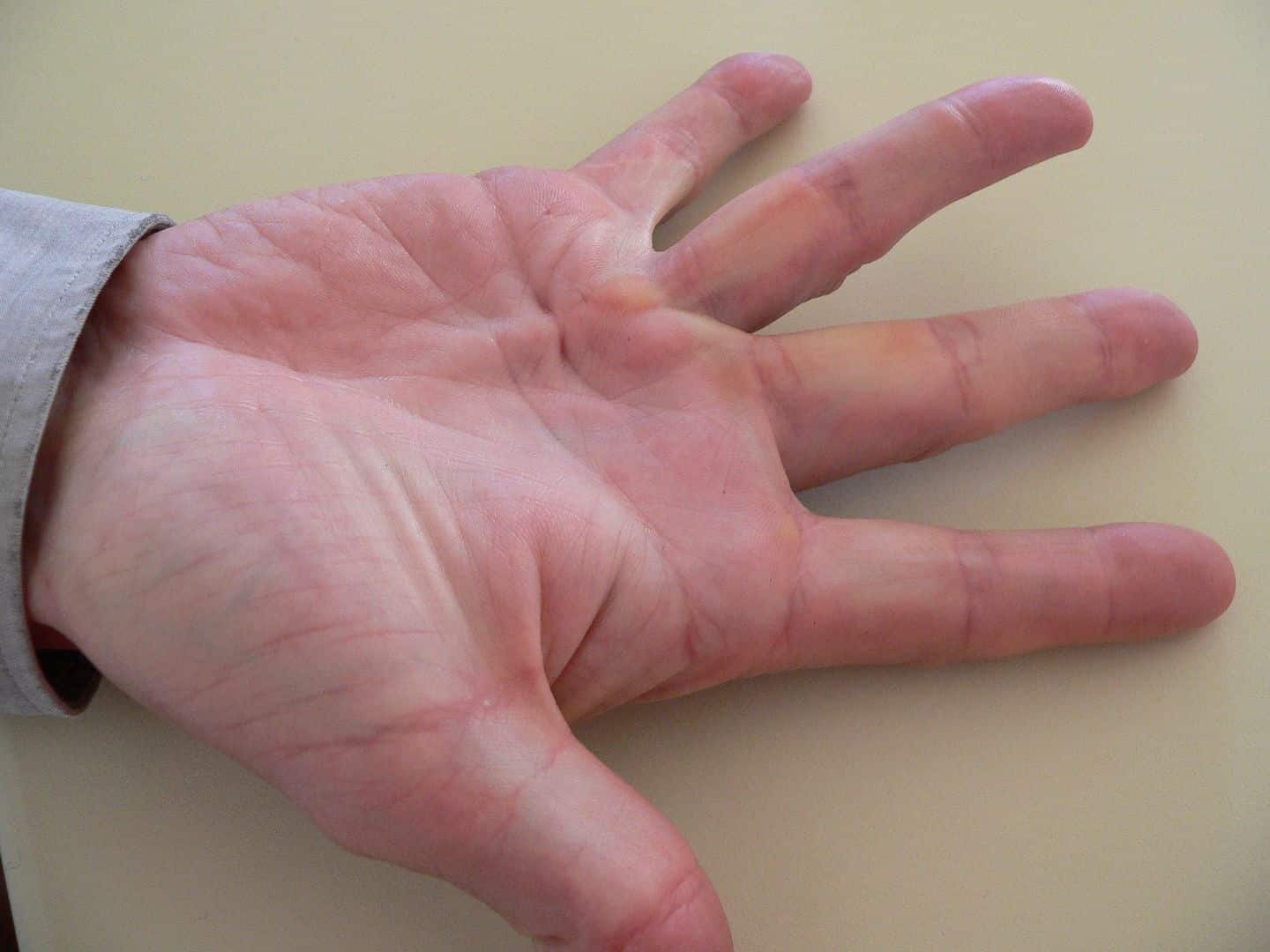Researchers have established a connection between Neanderthal genetic material and an unusual health disorder observed in present-day humans. This disorder, commonly known as Dupuytren’s disease or Viking’s disease, manifests as a hand condition that can result in the permanent bending of certain fingers at an angle, and it presently has no cure.

Previous studies had identified several risk factors for the condition, including age, diabetes and genetic predisposition. A 1999 Danish study reported 80% heritability for the condition, which is much more common in people of Northern European ancestry. One study found its prevalence among Norwegians over 60 years old to be up to 30%.
The condition is rare, however, for those of primarily African descent. This has given the disease the nickname “Viking disease.” People from Africa have little ancestry from Neanderthals, who lived in Europe and Asia about 40,000 years ago. Meanwhile, those who have roots outside Africa inherited up to 2% of their genome from Neanderthals.
This is a case where the meeting with Neanderthals has affected who suffers from illness,” the paper’s lead author, Hugo Zeberg, a researcher focused on humans’ gene flow, working at the Karolinska Institute in Stockholm, said in a statement. “Although we should not exaggerate the connection between Neanderthals and Vikings.”
A very unusual condition
The researchers looked at data from over 7,000 individuals impacted by Dupuytren’s disease, with the aim of identifying a genetic origin. While painless, the disease can cause one or more fingers to bend towards the palm of the hand. The fingers can’t straighten completely and knots of tissue can also form under the skin.
The disease typically impacts the two fingers located farthest from the thumb, leading to difficulties in performing everyday tasks like tucking hands into pockets. Although a cure is not available, various treatments exist to alleviate symptoms and decelerate the progression of the condition. It’s common for the condition to affect both hands simultaneously.
In their study, the researchers looked at data from three clinical groups in the US, the UK and Finland, comparing the genomes of people with and without the disease. They identified 61 genetic risk factors for Dupuytren, including three inherited from Neanderthals. Of those, two were the second and third most important risk factors.
The study provides additional proof that the interbreeding between Neanderthals and our ancient ancestors continues to have an impact on our health. In fact, another study published last week found that Neanderthal genes are responsible for certain traits in modern humans, including several with an influence on the immune system.
The study was published in the journal Molecular Biology and Evolution.






